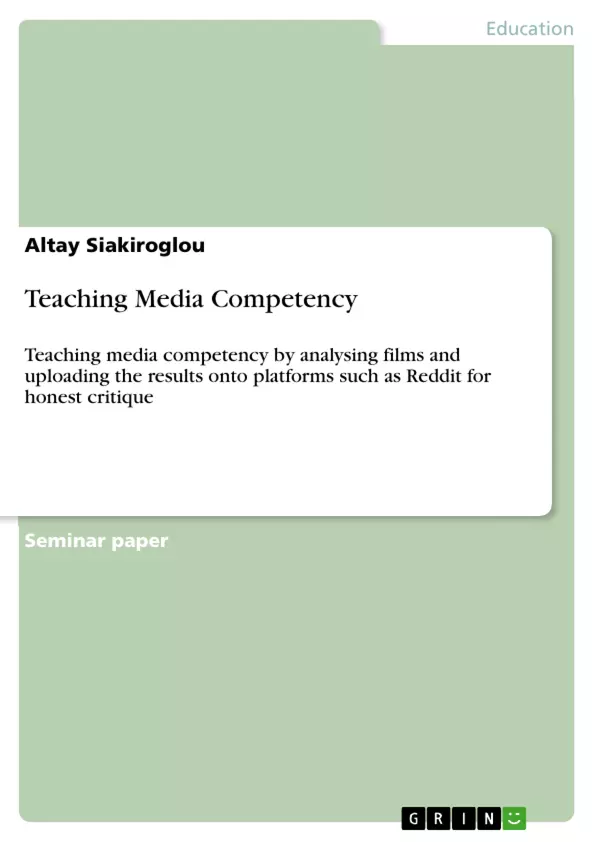In recent years and decades the world has successively become more digital. The digitalisation rapidly captured the life of the people and our daily life is unthinkable without digitial devices or the internet. The increasing innovations and revolutionary development of technology created a complete different landscape for media and communication: the Web 2.0. Nowadays people almost all over the world have the possibility to access internet and communicate with each other. Besides, the world has become much more visual as TV, ads etc. were taken into a new level by the technological development. The developments inevitably influence the society and especially the new generations who grow up with the internet and are confronted daily with a visualized environment. Particularly the influence of the internet is so strong that scientists are already talking about “digital natives“. Even being neglected for a couple of years the education system has noticed the influence of the internet and visual aspects on the youth. Since then, media competency has become an important educational objective. Some scientists even consider media competency as the fourth Kulturtechnik alongside reading, writing and calculating.
Inhaltsverzeichnis (Table of Contents)
- Introduction
- Theoretical Part
- Media competency
- Online-Communication
- Learner Autonomy
- Intercultural Competence
- Practical Part
- Teaching Unit – American Dream
Zielsetzung und Themenschwerpunkte (Objectives and Key Themes)
This paper aims to develop a teaching unit that promotes media competency through film analysis and online discussion. The theoretical framework encompasses media literacy, visual literacy, online communication, learner autonomy, and intercultural competence. The practical part presents a detailed teaching unit focusing on the "American Dream" with clear learning objectives and contextual information.
- Media competency as a critical educational objective in the digital age
- Developing critical thinking skills in relation to media production and consumption
- The role of visual literacy in understanding and creating visual messages
- Harnessing online platforms for constructive discussion and collaborative learning
- Fostering learner autonomy and intercultural understanding in the context of media education
Zusammenfassung der Kapitel (Chapter Summaries)
- Introduction: The introduction sets the stage for the paper by highlighting the increasing influence of digital media and the significance of media competency in education. It also outlines the structure of the paper, which is divided into theoretical and practical parts.
- Media competency: This chapter defines media competency and explores its various dimensions, emphasizing the importance of critical thinking, media knowledge, usage, and arrangement. It also discusses the role of teachers in developing media competencies within students.
- Media Literacy: The chapter delves into the concept of media literacy and examines different perspectives on its definition and importance. It highlights the skills, knowledge, and understanding necessary for effective and safe media consumption.
- Visual Literacy: This chapter focuses on the skill of interpreting and creating visual messages. It discusses the importance of visual literacy in a world increasingly reliant on visual communication and its role in fostering critical thinking and understanding of media manipulation.
Schlüsselwörter (Keywords)
The primary focus of this paper revolves around media competency, visual literacy, online communication, learner autonomy, and intercultural competence. The theoretical framework draws upon concepts and research related to these topics, aiming to develop an effective teaching unit that promotes critical thinking and engagement with media in the digital age.
- Quote paper
- Altay Siakiroglou (Author), 2016, Teaching Media Competency, Munich, GRIN Verlag, https://www.grin.com/document/424911



